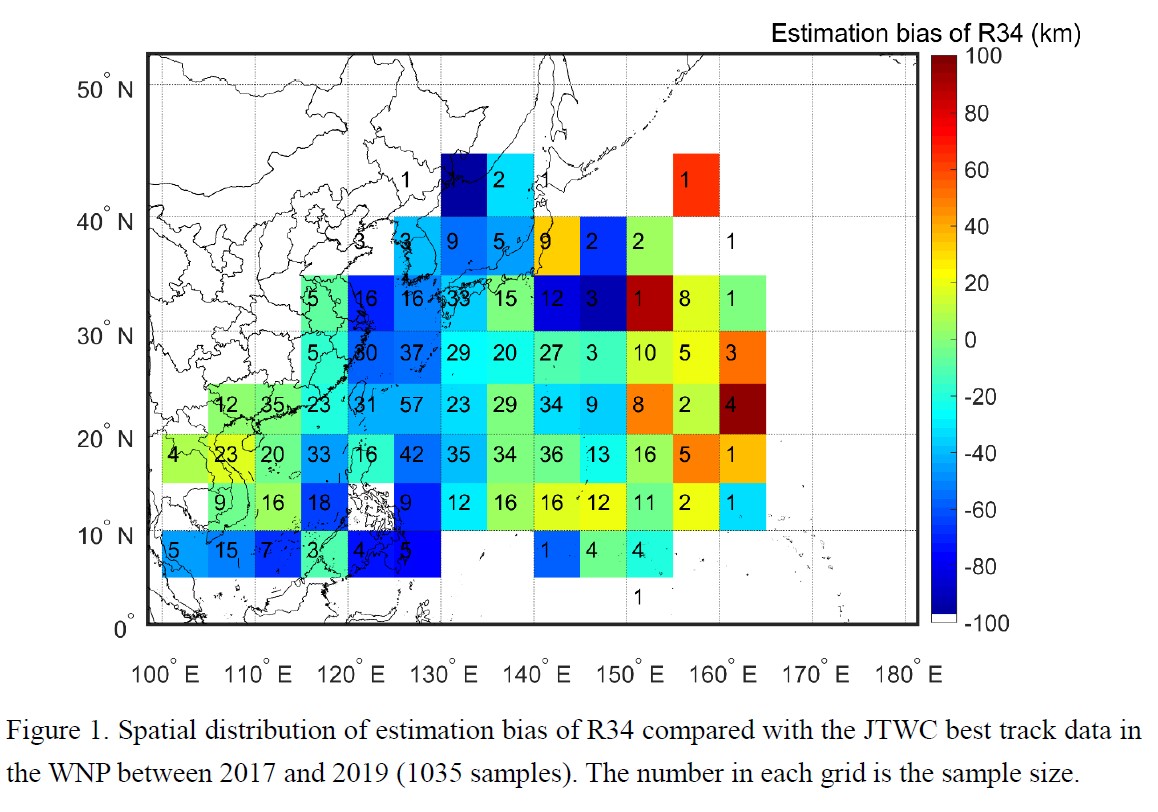Graphical Abstract
Lu, X., W.-K. Wong, H. Yu, X. Yang, 2022: Tropical cyclone size identification over the Western North Pacific using support vector machine and general regression neural network. J. Meteor. Soc. Japan, 100, 927-941.
https://doi.org/10.2151/jmsj.2022-048.
Early Online Release
Graphical Abstract
Plain Language Summary: Identification models of size for TCs in the WNP were proposed based on the infrared channel imagery of geostationary meteorological satellites. Several different machine learning algorithms were tested for different TC size parameters, including RMW, R34, R50, and R64. It is obtained that RMW and R34 can be best estimated by the support vector machine models, while R50 and R64 can be best estimated by the general regression neural network models. These models are used to set up a dataset of TC size for a nearly 40-yr period in the WNP region.
Highlights:
-
The spatial distribution of estimation bias of R34 (Fig. 1) indicates its underestimation near land, such as the coastal areas of the Philippines, East China, and the Korean Peninsula. When a TC is close to land, friction may lead to an inclination of the TC in the vertical direction. Then the BTP across the weak convection away from the center is obtained due to the misalignment of the center of the high-level cloud top and the surface center, which results in an underestimation of R34 in the model. On the other hand, R34 is overestimated in the region where a TC has just formed. It is plausible that dense cloud clusters associated with developing TCs may provide the model with false BTP features suggesting stronger convection, leading to overestimation. Overall, the validation shows that the proposed models perform satisfactorily in providing accurate and reliable estimated wind radii, except for at certain latitude regions or for unusually large TCs.







